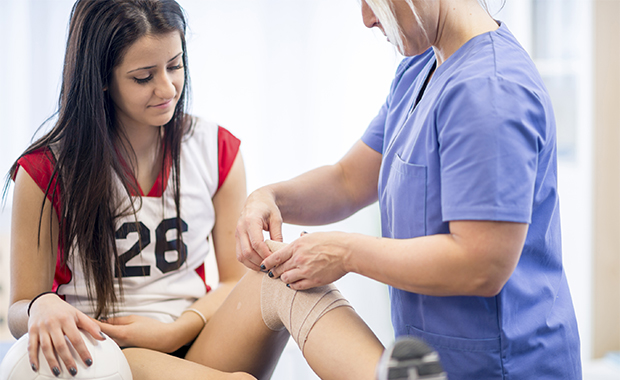 Practice isn't the main time to avert wounds in volleyball. What competitor's do off the court, prior and then afterward rehearse or a diversion, can forestall a throbbing painfulness.
Practice isn't the main time to avert wounds in volleyball. What competitor's do off the court, prior and then afterward rehearse or a diversion, can forestall a throbbing painfulness. In the game of volleyball it's imperative to do reinforcing practices on regions that are at an expanded danger of damage do to the way of the game. Heidi Greenwood, previous University of North Dakota volleyball competitor and secondary school mentor, is no more odd to wear related wounds. Through her experience, she knows how to stay away from harm with straightforward traps that any competitor can do, regardless of the amount of time constraints he or she has.
Under the watchful eye of hopping on the court, attempt these tips from Greenwood to warm up and maintain a strategic distance from damage.
Prehab
What is prehab?
Prehab is effectively using a progression of activities and developments to avoid damage. Prehab practices don't require a lot of time, yet require exact and centered system to be compelling. Greenwood offers prehab activities to maintain a strategic distance from normal volleyball wounds: shoulder and lower leg wounds.
- How regularly would it be advisable for you to prehab?
- Three times each week in the off-season and two times each week amid season.
- What number of reps and sets would it be advisable for you to do?
- Prehab activities ought to be dynamic, much the same as any quality preparing program. Begin little and work from that point.
Shoulder Prehab Exercises
Shoulder damage counteractive action activities are centered around fortifying the little muscles in the rotator sleeve. The rotator sleeve is made out of four little, yet essential muscles for versatility, soundness and force (subscapularis, supraspinatus, infraspinatus and teres minor). Since the muscles that make up the rotator sleeve are modest, just a little load (band or dumbbell) is should have been compelling.
- Conventional push-ups utilizing standard, limited, or wide-hand situation
- Medication ball or off set push-ups
- Solidness ball push-ups
- Standing or side-lying outside and inward revolution utilizing groups or light weight
- Standing "y" (scapular solidness)
- Frontal/forward and side/sidelong raises utilizing groups or dumbbells
Lower leg Prehab Exercises
As a volleyball player, the consistent hopping and moving in different headings can without much of a stretch cause a lower leg harm. To keep this, Greenwood offers dynamic developments that help the lower leg move in all planes or headings keeping in mind hopping.
Single-leg equalization works out. Begin with a hard surface, and afterward advance to a froth cushion or pad, and after that to a wobble board.
- Single-leg standing while playing get with an accomplice
- Single-leg small scale squats
- Flexible band dorsiflexion, plantarflexion, eversion, and reversal works out
- Basic terms: point toes down, flex toes up, draw lower leg outward and internal utilizing a versatile band for resistance
Warm-Up
It's vital to effectively (progressively) warm-up every one of the muscles in the shoulder and lower leg before rivalry. Research has demonstrated that static extending is an inadequate approach to warm-up. One arrangement of 10 to 12 redundancies of prehab activities recorded above utilizing a versatile band is perfect.
Eat a Nutrient-Rich Diet
Sustenance assumes a key part in damage anticipation. An amazing, supplement thick eating regimen can keep up extraordinary wellbeing and repair the body on a cell level. Consider utilizing sustenance to battle that consistent irritation in the body. Tart cherry juice, beets, berries, dull verdant greens, peppers, tomatoes, ginger and turmeric, and greasy fish and nuts that are high in omega-3 unsaturated fats are all fantastic choices.
Legitimate Support
In a study done by the American Orthopedic Foot and Ankle Society, the creator assesses the impact of different lower leg props on the frequency of lower leg sprains in secondary school volleyball players. There were 999 members: 957 competitors wearing props and 42 members without any supports. The outcomes demonstrate that lower leg supports essentially shield lower legs from sprains among the individuals who had not experienced a past harm. Around nine percent endured minor damage. In this way, volleyball players might need to consider lower leg support for practices and amusements to keep any foot or lower leg harm.
Post a Comment